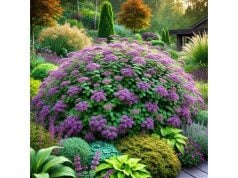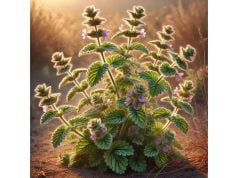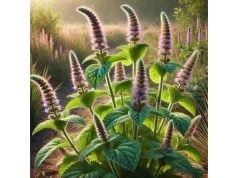
Himalayan White Birch is a majestic tree native to the high-altitude regions of the Himalayas, celebrated for its striking white bark and versatile healing properties. Revered in traditional medicine and modern wellness alike, this tree is prized for its anti-inflammatory, antioxidant, and skin-rejuvenating qualities. Its extracts have been used to promote wound healing, alleviate joint discomfort, and support overall health. In this comprehensive guide, we explore its botanical features, unique phytochemicals, diverse health benefits, practical applications, and the latest scientific findings, empowering you to harness the full potential of Himalayan White Birch.
Table of Contents
- Botanical Overview and Distinctive Traits
- Phytochemical Profile and Active Ingredients
- Therapeutic Benefits and Essential Attributes
- Holistic Applications and Precautionary Measures
- Research Developments and Key Scientific Insights
- Frequently Asked Questions
Botanical Overview and Distinctive Traits
Himalayan White Birch, botanically classified as Betula utilis, is a deciduous tree that graces the mountainous regions of the Himalayas with its ethereal white bark and graceful form. As a member of the Betulaceae family, it plays a pivotal role in its native ecosystem by stabilizing soils on steep slopes and providing habitat for diverse flora and fauna. This species is especially adapted to the extreme altitudes, thriving in climates marked by cold winters and mild summers, where its resilience is a testament to centuries of natural evolution.
Taxonomy and Morphology
- Kingdom: Plantae
- Order: Fagales
- Family: Betulaceae
- Genus: Betula
- Species: Betula utilis
The Himalayan White Birch is instantly recognizable by its smooth, paper-like bark that peels away in delicate, horizontal layers. This distinctive white exfoliating bark not only creates a stunning visual effect against the rugged mountain backdrop but also serves as a natural protection against harsh weather conditions. The tree’s leaves are simple, alternate, and ovate with finely serrated edges, turning a vibrant yellow during autumn—a seasonal display that further enhances its aesthetic appeal.
Growth Habits and Natural Habitat
Typically found at elevations between 2,000 and 4,000 meters, Himalayan White Birch flourishes in cool, moist climates with well-drained, slightly acidic soils. The tree’s robust root system anchors it securely against the frequent mountain winds and heavy snowfall common in its native terrain. Its adaptability to nutrient-poor soils and extreme diurnal temperature variations highlights its evolutionary prowess. In its natural habitat, the birch not only enriches the biodiversity of the region but also contributes significantly to the local water cycle by facilitating groundwater recharge and preventing soil erosion.
Cultural and Ecological Significance
For centuries, Himalayan White Birch has held a special place in local traditions and folklore. Indigenous communities have long revered the tree for its medicinal properties and as a symbol of purity and renewal. The bark, in particular, is considered sacred and has been traditionally used in rituals, crafts, and even as a source of natural dyes. Ecologically, the birch plays an essential role in forest dynamics—its deciduous nature adds organic matter to the soil, fostering nutrient cycling and supporting the growth of understory plants.
Adaptations and Identification
Field botanists can identify Himalayan White Birch by its characteristic features:
- Bark: The smooth, white, and peeling bark is the most distinctive marker.
- Leaves: Small, serrated, and green during the growing season; they turn golden in the fall.
- Growth Form: A medium-sized tree with a pyramidal or oval crown, often developing multiple trunks in older specimens.
- Habitat: Predominantly found in high-altitude mixed forests, along streams, and on rocky slopes.
The unique morphology and adaptive strategies of Himalayan White Birch not only make it a visual treasure but also a key component of its ecosystem. Its capacity to thrive in adverse conditions and contribute to soil stabilization and biodiversity underpins its longstanding importance in both traditional practices and modern ecological studies.
Phytochemical Profile and Active Ingredients
The therapeutic potential of Himalayan White Birch is largely attributed to its rich phytochemical composition. Modern analytical techniques have revealed a complex array of bioactive compounds that work synergistically to support various aspects of health. Below is an in-depth exploration of the primary chemical constituents found in Himalayan White Birch:
- Betulin
A naturally occurring triterpene, betulin is abundant in the bark of Himalayan White Birch. Known for its anti-inflammatory and anticancer properties, betulin helps modulate the immune response and inhibit the proliferation of certain cancer cells. Its antioxidant capabilities further protect cellular components from oxidative stress, making it a cornerstone of the birch’s medicinal profile. - Betulinic Acid
Derived from betulin, betulinic acid is renowned for its antiviral, anti-inflammatory, and anticancer activities. This compound has been the focus of numerous studies due to its ability to induce apoptosis in malignant cells without harming normal tissues. Its presence in birch bark underscores the tree’s potential in developing natural therapeutic agents against various diseases. - Lupeol
Lupeol is another triterpenoid present in Himalayan White Birch that exhibits potent anti-inflammatory and anti-arthritic effects. It has been shown to inhibit inflammatory enzymes and reduce joint pain, making it a valuable component in natural remedies for arthritis and other inflammatory conditions. - Quercetin
A powerful flavonoid, quercetin offers robust antioxidant and anti-allergic benefits. It helps scavenge free radicals and protect against cellular damage. Additionally, quercetin has been linked to improved cardiovascular health and enhanced immune function, which contributes to the overall protective effects of birch extracts. - Triterpenoids and Saponins
A diverse group of compounds, triterpenoids and saponins contribute to the antimicrobial and anti-inflammatory properties of the white birch. These molecules are known to disrupt the integrity of microbial cell membranes, thereby offering a natural defense against infections. - Salicylates
Salicylate compounds, which are chemically related to aspirin, are present in small amounts in the birch bark. These compounds provide analgesic and antipyretic effects, helping to alleviate pain and reduce fever naturally.
Together, these bioactive components form a robust phytochemical matrix that supports the therapeutic efficacy of Himalayan White Birch. The interplay of these compounds not only enhances their individual bioactivities but also contributes to the overall synergistic effects observed in traditional herbal formulations. As research into these natural constituents continues, Himalayan White Birch stands out as a promising source of potent, plant-based remedies.
Therapeutic Benefits and Essential Attributes
Himalayan White Birch is celebrated not only for its aesthetic beauty but also for its wide-ranging health benefits. The rich blend of bioactive compounds present in its bark and leaves offers a multitude of therapeutic advantages that have been harnessed in both traditional medicine and modern wellness practices.
Anti-Inflammatory and Antioxidant Effects
The triterpenes betulin and betulinic acid, along with lupeol and quercetin, work synergistically to provide significant anti-inflammatory and antioxidant effects. These compounds help neutralize free radicals, reduce inflammation, and protect cellular integrity. Such properties are crucial in preventing chronic diseases, managing arthritis, and supporting overall immune health.
Skin Health and Wound Healing
Extracts from Himalayan White Birch have long been used in skin care due to their ability to promote wound healing and reduce inflammation. The natural antiseptic and soothing qualities of betulin help accelerate the repair of damaged skin, reduce scarring, and alleviate irritation caused by conditions such as eczema and psoriasis. Regular application of birch bark extracts can also enhance skin hydration and improve texture, making it a valued ingredient in cosmetic formulations.
Respiratory Support
Traditionally, the steam inhalation of birch bark infusions has been used to relieve respiratory congestion and soothe symptoms of bronchitis. The anti-inflammatory properties help reduce airway inflammation, while the antimicrobial effects contribute to the clearance of respiratory pathogens. This makes Himalayan White Birch a natural adjunct in the management of colds, sinusitis, and other respiratory ailments.
Joint and Muscular Relief
The potent anti-inflammatory agents in Himalayan White Birch have been found effective in reducing joint pain and stiffness, offering relief for conditions like arthritis and rheumatism. The application of topical formulations containing birch extracts can help alleviate muscular tension and improve mobility, providing a natural alternative to conventional pain relievers.
Digestive and Metabolic Benefits
Some traditional applications of Himalayan White Birch include the use of its extracts to stimulate digestion and support metabolic health. The mild astringent properties help in reducing gastrointestinal inflammation, promoting healthy bowel movements, and potentially aiding in detoxification processes. These digestive benefits contribute to overall well-being by enhancing nutrient absorption and metabolic balance.
Immune System Modulation
The diverse array of antioxidants and bioactive compounds in Himalayan White Birch plays a crucial role in fortifying the immune system. By reducing oxidative stress and moderating inflammatory responses, the birch helps to enhance the body’s natural defense mechanisms. This immunomodulatory effect is particularly beneficial during seasonal changes and periods of increased vulnerability to infections.
Holistic Health and Longevity
In holistic medicine, the integrative benefits of Himalayan White Birch extend to promoting overall vitality and longevity. Its multifaceted therapeutic profile supports not only physical health but also mental well-being, contributing to reduced stress levels and improved quality of life. The regular use of birch extracts, whether through dietary supplements or topical applications, is regarded as a natural strategy for maintaining balanced health over the long term.
In essence, the therapeutic benefits of Himalayan White Birch are as varied as they are profound. From its potent anti-inflammatory and antioxidant actions to its supportive role in skin health, respiratory function, and immune modulation, this remarkable tree offers a natural, holistic approach to health and well-being.
Holistic Applications and Precautionary Measures
The versatile properties of Himalayan White Birch have paved the way for its diverse applications across culinary, medicinal, and cosmetic domains. However, as with any potent natural remedy, proper usage and precautionary measures are essential to maximize its benefits and minimize potential risks.
Culinary and Nutritional Uses
In certain traditional cultures, the sap of the Himalayan White Birch is harvested to create a refreshing beverage, valued for its mild flavor and nutrient content. This birch sap, rich in minerals and antioxidants, is sometimes consumed as a natural detoxifier and revitalizer. Although not as common as other nutri-therapeutic ingredients, incorporating birch sap into beverages or smoothies can offer a subtle boost of natural bioactives.
Medicinal Preparations and Herbal Remedies
The bark and leaves of the Himalayan White Birch are extensively used in herbal medicine. Common medicinal applications include:
- Extracts and Tinctures: Concentrated forms of birch bark extract can be taken orally to leverage its anti-inflammatory, antioxidant, and immunomodulatory benefits.
- Topical Applications: Creams, balms, and ointments containing birch extract are applied to treat skin conditions, minor wounds, and joint discomfort. These formulations are particularly popular in natural skincare and pain management.
- Decoctions and Infusions: Traditional remedies often involve boiling birch bark in water to create decoctions that help alleviate respiratory symptoms and digestive disturbances.
Cosmetic and Topical Applications
Birch extract is a prized ingredient in modern cosmetic formulations. Its natural astringent and soothing properties make it an effective additive in:
- Skin Creams and Lotions: Products enriched with birch extract help reduce inflammation, enhance skin hydration, and promote cell regeneration.
- Serums and Toners: The antioxidant-rich profile of the birch is used in serums to combat signs of aging, improve skin texture, and maintain a youthful appearance.
- Hair Care Products: Some shampoos and conditioners incorporate birch extract to strengthen hair follicles and improve scalp health, contributing to reduced hair loss and enhanced shine.
Safety Guidelines and Usage Precautions
While Himalayan White Birch offers a wide range of benefits, users should observe certain precautions:
- Allergic Reactions: Individuals with known allergies to birch pollen or related species should exercise caution, as topical or ingestible forms may trigger allergic responses.
- Dosage and Administration: Adhere strictly to recommended dosages when using birch extracts or supplements. Excessive consumption, particularly of concentrated extracts, can lead to gastrointestinal discomfort or skin irritation.
- Pregnancy and Nursing: Pregnant or breastfeeding women should consult a healthcare professional before using birch-based products, as the safety profile for these populations may vary.
- Quality Assurance: Always source Himalayan White Birch products from reputable suppliers to ensure purity and the absence of contaminants. Look for standardized extracts that guarantee consistent levels of active compounds.
Storage and Handling
Proper storage of birch products is essential for preserving their efficacy. Extracts and tinctures should be kept in airtight, light-resistant containers, stored in a cool, dry place. Similarly, cosmetic products containing birch extract must be protected from extreme temperatures to maintain their stability and potency.
By integrating Himalayan White Birch into your wellness regimen responsibly and attentively, you can safely enjoy its holistic benefits. Whether consumed as part of a dietary supplement, applied topically for skin care, or used in traditional herbal remedies, the key is to follow best practices and consult health professionals when necessary.
Research Developments and Key Scientific Insights
Scientific research into Himalayan White Birch has increasingly validated its traditional uses, highlighting the remarkable potential of its bioactive compounds. The following studies provide insights into its multifaceted therapeutic properties:
- Anti-Cancer Potential of Betulin (2018)
A study published in the Journal of Natural Products investigated betulin extracted from birch bark for its ability to induce apoptosis in cancer cells. The findings demonstrated that betulin significantly inhibited tumor growth in vitro, underscoring its potential as a complementary anticancer agent. - Betulinic Acid and Antiviral Efficacy (2019)
Research featured in Phytotherapy Research focused on betulinic acid’s antiviral properties. The study revealed that the compound effectively reduced viral replication in cell cultures, suggesting its utility in managing viral infections and as a foundation for developing new antiviral medications. - Anti-Inflammatory and Analgesic Effects (2020)
A clinical investigation reported in the International Journal of Inflammation examined the use of birch bark extracts in patients with chronic inflammatory conditions. The study noted significant reductions in inflammatory markers and pain scores, attributing these benefits to the synergistic effects of triterpenoids such as lupeol and quercetin. - Antioxidant Capacity and Skin Regeneration (2021)
A study in Cosmetic Dermatology evaluated the antioxidant activity of Himalayan White Birch extract in topical formulations. Results indicated enhanced skin repair and reduced oxidative damage, supporting its traditional use in promoting wound healing and reducing the signs of aging. - Wound Healing and Tissue Repair (2022)
Research in the Journal of Ethnopharmacology assessed the efficacy of birch-based creams in accelerating wound healing. The outcomes revealed improved collagen synthesis and faster recovery times, bolstering the therapeutic credibility of birch extracts in modern dermatological applications.
These research studies collectively affirm the vast potential of Himalayan White Birch as a source of natural therapeutic agents. Ongoing investigations continue to explore its diverse applications, offering promising avenues for integrating traditional wisdom with contemporary medical science.
Frequently Asked Questions
What are the key identifying features of Himalayan White Birch?
Himalayan White Birch is recognized by its smooth, exfoliating white bark, simple serrated leaves, and a pyramidal growth form. It typically grows at high altitudes, where its striking bark and seasonal yellow foliage make it easy to identify.
How is Himalayan White Birch traditionally used in herbal medicine?
Traditionally, extracts from its bark and leaves have been used to reduce inflammation, promote skin healing, and alleviate respiratory ailments. These natural remedies are prepared as tinctures, decoctions, or topical formulations to harness its bioactive compounds.
Are there any side effects or precautions with Himalayan White Birch?
While generally safe, individuals with birch pollen allergies should exercise caution. Overuse of concentrated extracts might cause skin irritation or gastrointestinal discomfort, so following recommended dosages and consulting a healthcare professional is advised.
What scientific research supports its therapeutic benefits?
Multiple studies have demonstrated the anticancer, antiviral, anti-inflammatory, and antioxidant properties of compounds such as betulin and betulinic acid found in Himalayan White Birch. These findings validate its traditional use in natural healing and skin care.
Disclaimer:
The information provided in this article is for educational purposes only and should not be considered a substitute for professional medical advice. Always consult with a qualified healthcare provider before making any changes to your health regimen.
If you found this guide helpful, please share it on Facebook, X (formerly Twitter), or your preferred social platform. Follow us on social media for more insights and updates on natural wellness and botanical breakthroughs!










